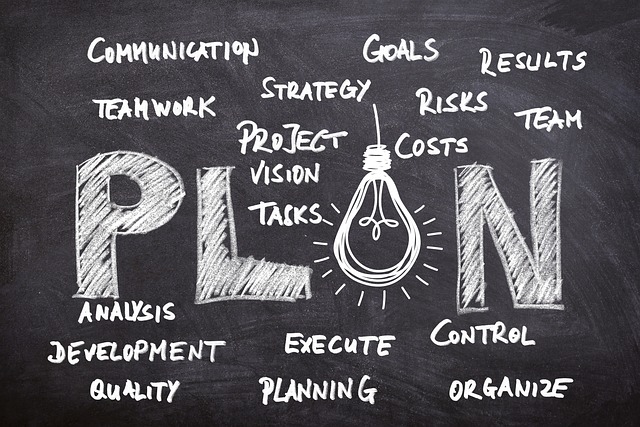Understanding the Importance of Customer Relationships
Customer relationships are the bedrock of any successful business. Think about it: without strong connections with your customers, what do you really have? A product? A service? But no one to appreciate it. Cultivating effective customer relationships goes beyond just making the sale; it’s about creating an experience that resonates and fosters loyalty. This loyalty not only drives repeat business but also transforms customers into advocates who will promote your brand through word-of-mouth, social media, and reviews. The psychology behind positive customer relationships reveals patterns — happy customers tend to share positive experiences, while dissatisfied ones can significantly harm your brand image if their issues go unresolved.
Furthermore, in today’s world saturated with competition, where consumers have endless options at their fingertips, the sheer act of providing an excellent product is often not enough. Customers look for brands they can trust, whose values align with theirs, and those that treat them with respect and understanding. Building effective customer relationships nurtures this trust. When customers feel valued, they are less likely to switch to a competitor, even if the competitor offers a slightly better price. So, investing in customer relationships is not merely an option; it’s a necessity in the modern marketplace.
Listen Actively to Your Customers
One of the fundamental tips for building effective customer relationships is active listening. This skill is often overlooked in the hustle of daily business operations. Active listening means engaging fully with your customers, whether through face-to-face conversations, phone calls, or digital communication. It’s giving them your undivided attention to understand their needs, concerns, and feedback. When customers perceive that you are genuinely interested in what they have to say, they are more likely to feel valued and understood.
Actively listening involves not just hearing the words but also grasping the emotions behind them. When a customer shares a problem, they are looking for more than just a solution; they want to feel heard. Acknowledging their frustration and showing empathy goes a long way. Use phrases like, “I can understand why that would be upsetting,” or “Thank you for sharing your thoughts; I appreciate your feedback.” This approach builds a rapport that opens the door to more meaningful interactions down the road.
To further enhance your active listening skills, consider implementing tools such as customer surveys, feedback forms, or regular check-ins after a purchase. These methods allow you to gather essential information about your customers’ experiences. Collecting and analyzing this feedback helps you to fine-tune your offerings and address any weaknesses in your customer service. Positive changes made based on customers’ input can significantly enhance their loyalty, as they see you are committed to improving their experience.
Offer Personalized Experiences
In a world where automation and standardization reign supreme, customers crave personalization. This need for tailored experiences is crucial for building effective customer relationships. By leveraging data and insights about your customers, you can offer solutions and experiences that resonate individually with them. Instead of treating all customers the same, develop a nuanced understanding of their preferences and behaviors. This might mean recommending products based on past purchases or sending personalized messages on their birthdays.
Creating a customer persona is a powerful way to achieve personalization. A persona aggregates data about your different types of customers into a single profile that can include demographics, preferences, buying habits, and more. Use this data to segment your communications and marketing strategies. For instance, if a segment of your customer base enjoys eco-friendly products, highlight your sustainable practices and initiatives in your communications with them. This tailored approach builds a stronger connection, as customers feel like you understand and cater to their individual preferences.
You can also personalize customer interactions through your customer service approach. Train your staff to address customers by name, remember previous interactions, and understand their specific needs. This level of attention can turn a simple transaction into a relationship-building exercise. By creating unique interactions based on individual needs, you are not just making sales — you are forging bonds that lead to long-term customer loyalty.
Maintain Open Communication Channels
Communicating openly with your customers is another essential aspect of effective customer relationships. Transparency fosters trust, and today’s consumers expect it from the brands they support. They want to know what to expect from your products, shipping timelines, return policies, and even your company’s values. Keeping your lines of communication open ensures that customers feel informed and can reach out whenever they have questions or concerns.
Utilize various communication channels to meet your customers where they are. Whether it’s social media, email, chatbots, or traditional phone support, being accessible increases the likelihood that customers will engage. Moreover, once these channels are established, maintain regular contact. Sending updates, newsletters, or offers can keep your brand top-of-mind, showing customers that you value their ongoing engagement.
In the realm of effective customer relationships, handling complaints and negative feedback becomes paramount. You should not shy away from negative reviews. Instead, respond graciously and promptly, addressing the customer’s concerns directly. Offering solutions, like refunds or exchanges, showcases your commitment to customer satisfaction. This responsiveness can significantly change a dissatisfied customer’s perception, sometimes turning them into one of your biggest advocates.
Consistency is Key
Your brand identity reaches beyond just your products; it includes every interaction your customers have with you. Consistency in your messaging, service quality, and customer support creates a reliable brand image, which is integral for building effective customer relationships. Customers want to know they can count on you. When they encounter a consistent level of service and quality, they are far more likely to return to you in the future.
Having clear, written guidelines for customer service and interactions can help ensure that your team provides a consistent experience. Training your staff and running regular workshops can keep everyone on the same page regarding your brand values and the expectations that customers have for your service. Moreover, consistency applies not just to customer interactions but also to your branding across platforms. The visual elements of your branding, from your logo to your website, should remain uniform. This cohesion reinforces your brand identity in the customer’s mind.
Moreover, utilize CRM (Customer Relationship Management) tools to maintain consistency in how you manage customer interactions, follow-ups, and communications. These tools provide a structured approach to keeping track of customer information and past interactions, ensuring that your engagement is aligned and coherent regardless of who your customer interacts with within your organization.
Empower and Train Your Staff
Your employees are at the frontline of customer interactions. Therefore, empowering and training your staff plays a tremendous role in building effective customer relationships. They need the right tools and mindset to represent your brand positively. Start by providing comprehensive training on customer service skills, product knowledge, and handling difficult situations. A well-trained staff member can turn a negative experience into a positive one by effectively resolving issues and leaving customers feeling valued and respected.
In addition to technical training, encourage a culture of empowerment among employees. Allow team members to make decisions that can improve customer satisfaction, such as issuing discounts or resolving complaints without needing to escalate every issue to a manager. This empowerment makes your team member feel invested in their role and encourages them to deliver an outstanding customer experience.
Furthermore, cultivate a customer-centric culture within your organization. Regularly emphasize the importance of customer relationships in meetings, communications, and company goals. Sharing customers’ success stories can motivate staff to put their best foot forward when serving customers. Encourage feedback from your team about common customer issues and potential improvements, as they are often the ones with valuable insights into the customer experience.
Leverage Technology for Better Engagement
Technology has dramatically changed how businesses engage with customers. By leveraging modern tools and platforms, you can create a more engaging customer experience. Start by using customer relationship management systems, chatbots, and analytics tools to gather information and improve interactions. These technologies provide insights into customer behavior, preferences, and pain points, allowing you to tailor your strategies accordingly.
For example, chatbots can provide instant support, answering common questions and redirecting customers to the appropriate resources during off-peak hours. This 24/7 availability enhances customer service and maintains engagement without overwhelming your human staff. Additionally, employing CRM software can help track customer interactions, manage relationships, and provide a holistic view of customer history, enhancing the personalized touch you can offer.
Nonetheless, ensure that the technology you utilize feels human and relatable. Automated messages should not replace genuine interactions but rather complement them. Whenever customers reach out, aim to connect through personal touches, maintaining that human element in your communications. A combination of technology and a personal approach will yield the best results in shaping effective customer relationships.
Recognize and Reward Loyalty
Recognizing and rewarding customer loyalty has a profound impact on building lasting relationships. When customers feel appreciated for their loyalty, they are more likely to return and engage more with your brand. You can create a loyalty program that rewards repeat purchases, referrals, and engagement through contests or offers. This strategy not only incentivizes continued patronage but also shows customers that you recognize and value them.
Additionally, implement personalized thank-you messages or special offers for loyal customers. These gestures can be as simple as sending a birthday discount or exclusive early access to new products. Such individualized attention can significantly deepen the emotional connection with your brand; when customers feel cherished, they are far less likely to consider switching to competitors, even when better deals arise.
Beyond just tangible rewards, focus on building a community around your brand, where loyal customers feel a sense of belonging. Engage with them on social media, invite them to participate in events, or create exclusive platforms for them to connect with one another and with your brand. This community sentiment can fortify their loyalty, creating brand ambassadors who will promote your offerings organically.
Conclusion
In the end, effective customer relationships are the cornerstone of any thriving business. As you navigate your customer interactions, keep in mind that every touchpoint is an opportunity to nurture these vital connections. Listening actively, personalizing experiences, maintaining open dialogue, and empowering employees all play critical roles in building a fruitful relationship with your customers. Through consistent engagement and recognition, you can foster loyalty that keeps your business thriving in the competitive marketplace.
FAQ
1. What are customer relationships?
Customer relationships refer to the ongoing interactions and connections a business maintains with its customers. It involves understanding their needs, addressing their concerns, and nurturing their loyalty over time.
2. How do I build effective customer relationships?
To build effective customer relationships, listen actively to your customers, offer personalized experiences, maintain open communication channels, and provide consistent service.
3. Why is active listening important in customer service?
Active listening shows customers that you value their input and appreciate their concerns. It leads to better understanding and resolution of issues, enhancing customer satisfaction.
4. What role does technology play in customer relationships?
Technology helps streamline customer interactions, deliver personalized experiences, and gather data on customer behavior, enhancing engagement and service delivery.
5. How can I reward loyal customers?
You can reward loyal customers through loyalty programs, personalized discounts, thank-you messages, and creating community engagement opportunities that make them feel valued.



